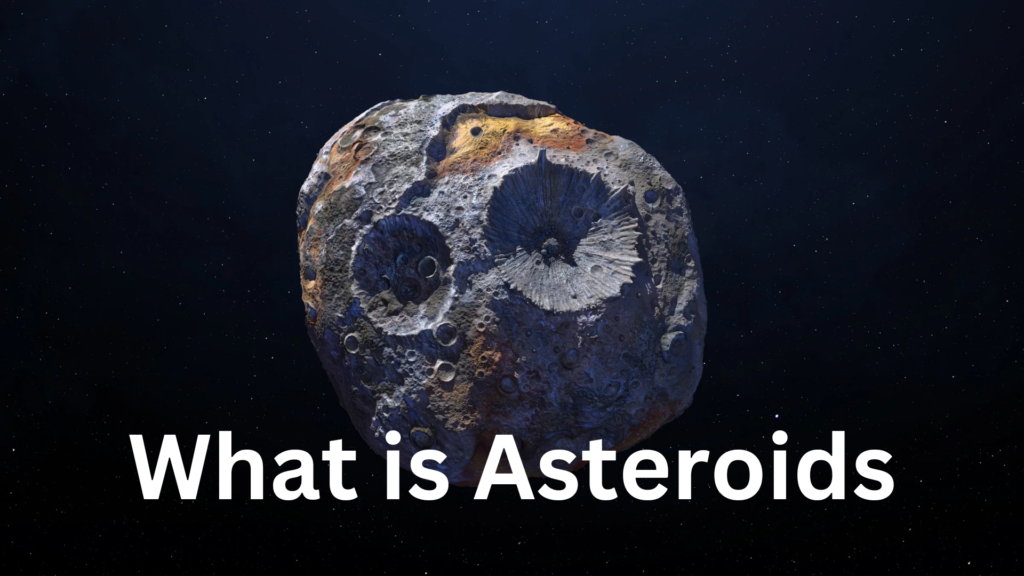

Asteroids are rocky objects that date back around 4.6 billion years to the early formation of our solar system. They are also known as small planets or planetoids. These celestial bodies provide important insights into the primordial conditions that produced our solar system. They are mostly found in the asteroid belt between Mars and Jupiter. This blog explores the characteristics of asteroids, their groups, possible dangers, and the importance of continuing asteroid research.
What Are Asteroids?
Asteroids are tiny, stony objects that orbit the Sun on a far smaller scale than planets. Asteroids lack atmospheres, in contrast to planets. They range in size from microscopic pebbles to massive objects with a diameter of hundreds of kilometers. The asteroid belt, a section of space situated between Mars and Jupiter’s orbits, is home to the bulk of known asteroids.
Classification of Asteroids
Asteroids are classified according to their composition and solar system location. The main categories are as follows:
1. C-type (Carbonaceous) Asteroids:- These make up almost 75% of all known asteroids and are the most prevalent. They seem dark and contain a lot of carbon. It is believed that the oldest objects in the solar system are C-type asteroids.
2. S-type (Salicaceous) Asteroids: – S-type asteroids, which make up roughly 17% of all known asteroids, are mostly made of nickel-iron and silicate elements. They are mostly located in the inner asteroid belt and are brighter than C-types.
3. M-type (Metallic) Asteroids: – These comprise around 8% of all known asteroids and are primarily composed of nickel and metallic iron. It is thought that M-types are the remains of distinct protoplanet cores.
4. Other Types: – In addition, there are D-types, V-types, and other varieties, each having unique compositions and reflectance characteristics.
The Asteroid Belt
Nestled between Mars and Jupiter’s orbits is a massive ring of debris known as the asteroid belt. Millions of asteroids, ranging in size from dust grains to the dwarf planet Ceres, which has a diameter of roughly 940 kilometers, are found in this region. Jupiter’s gravitational pull kept these particles from combining to form a larger planet.
Near-Earth Asteroids (NEAs)
Certain asteroids orbit in close proximity to Earth. They are referred to as NEAs, or near-Earth asteroids. On the basis of their orbital properties, they are further divided into the following groups:
1. Atiras :- Asteroids whose orbits completely fit inside the orbit of Earth.
2. Amors :- Asteroids whose orbits approach Earth’s orbit but do not cross it.
3. Apollos :- Asteroids having semi-major axes greater than Earth’s whose orbits intersect it.
4. Atens :- Asteroids with semi-major axes smaller than Earth’s whose orbits intersect it.
Potential Threats : Impact Hazards
Because they can have devastating effects, asteroids constitute a serious threat to Earth. According to the most well-known asteroid impact scenario, 65 million years ago, a massive asteroid impact caused the extinction of the dinosaurs. Using current technology, we can track and forecast the orbits of potentially hazardous asteroids (PHAs) in order to determine the likelihood of any prospective impacts.
Asteroid Exploration
Numerous missions have been launched by space organizations worldwide to conduct close-up studies of asteroids. Understanding their makeup, organization, and potential for resource use is the goal of these missions. Among the notable missions are:
• NASA’s Dawn Mission :- Examined the asteroids Vesta and Ceres.
• JAXA’s Hayabusa and Hayabusa 2 :- Samples that were returned from the asteroids Ryugu and Itokawa, respectively.
• NASA’s OSIRIS-REx :- sampled the asteroid Bennu with the intention of returning to Earth in 2023.
The Future of Asteroid Research
Research into asteroids is important for a number of reasons. It aids in our comprehension of the early solar system, evaluates the risk of prospective impacts, and investigates the possibility of mining asteroids for valuable commodities like metals, water, and other resources. We shall be able to deal with these fascinating celestial objects with more understanding and capability thanks to future expeditions and technological developments.
Conclusion
Beyond just being rocky space objects, asteroids hold the key to understanding the origins and development of our solar system. We can safeguard the security and well-being of our world and get a deeper understanding of these ancient nomads via ongoing observation, investigation, and adventure. For many years to come, the study of asteroids is expected to be an active and significant area of astronomy and planetary research.
